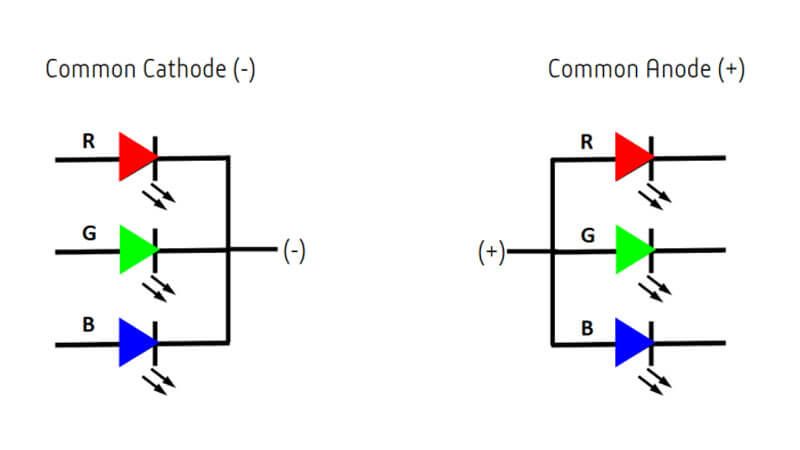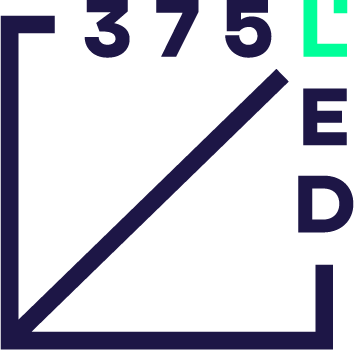Love & Care
Welcome to the 375LED Academy!
New or experienced? Find the answers you need here. Everyone, whether you’re new to the field or looking to deepen your knowledge, these answers will guide you through the essentials and beyond. Our Academy section is designed to explain the essential topics about LED displays in a clear and easy way. From selecting the right LED display to understanding the technology behind it, we’ve got you covered. Explore the FAQ below to get all the key answers you need, including our cutting-edge Ecoactive Nanotechnology, which sets 375LED apart in the industry.At 375 LED, we believe in making LED technology simple and accessible for.
There are four main types of LEDs, each suited to different applications:
- DIP (Dual In-Line Package): This traditional type of LED is known for its durability and is often used in outdoor displays where brightness is key. It’s perfect for large-scale projects like billboards where long-distance viewing is required.
- Example: Our outdoor billboards feature DIP technology for high visibility, even in harsh weather conditions.
- SMD (Surface-Mount Device): SMD LEDs are smaller, compact, and offer excellent image quality. They are ideal for both indoor and outdoor settings that require high resolution, such as in retail stores or concert venues.
- Example: 375LED’s indoor video walls use SMD technology to deliver sharp and vibrant visuals.
- COB (Chip on Board): COB LEDs provide greater brightness and better heat dissipation, making them perfect for large projects requiring intense light, like outdoor advertising or event displays.
- Example: We use COB technology in our high-brightness displays for events that require vivid, bright visuals for long periods.
- GOB (Glue on Board): GOB technology involves applying a protective glue layer over the LEDs, increasing durability by preventing damage from dust, moisture, or impact.
- Example: Our GOB-enhanced screens are ideal for high-traffic areas, ensuring the LEDs remain protected from external forces and wear.
Choosing the right LED display depends on several factors:
- Indoor or Outdoor Use: For outdoor projects, consider brightness and weatherproofing. Our outdoor LED screens are IP65-rated, making them weatherproof, and their brightness levels ensure visibility in sunlight. For indoor displays, the focus shifts to resolution and color quality.
- Example: For indoor retail displays, our SMD LEDs provide excellent resolution and color vibrancy, perfect for high-quality video and images.
- Viewing Distance: The closer the audience, the smaller the pixel pitch should be for sharper image quality. For example, a small pixel pitch (like 1.9mm or 1.2 mm) is great for close-up viewing in trade shows or retail stores, while a larger pixel pitch (like 8mm or 10 mm ) works well for stadiums or large public spaces.
- Example: Our pixel pitch options range from ultra-fine for close-up visuals to larger pixel pitches for long-distance displays, ensuring you get the perfect match for your needs.
- Brightness Needs: Outdoor environments need higher brightness levels, usually 5,000 nits or more, while indoor displays require less (800-1,500 nits).
- Example: Our outdoor billboards are designed with more than from 5,500 nits up to a staggering 13.000 nit in the ultra bright option to stay bright and clear, even in direct sunlight.
Pixel pitch refers to the distance between the center of one pixel to the center of the next. It determines how sharp and detailed your display will appear.
- Smaller Pixel Pitch (e.g., 1.5mm): The smaller the pitch, the higher the resolution. This is ideal for close-up viewing where every detail matters, like in retail displays or trade show booths.
- Example: Our 1.5mm pixel pitch displays offer ultra-high resolution, perfect for delivering fine details and text.
- Larger Pixel Pitch (e.g., 10mm): Larger pitches are suitable for long-distance viewing, like stadiums or large outdoor displays, where people are far from the screen.
- Example: Our stadium displays use larger pixel pitches to deliver clear, bright images visible to spectators from a distance.
- What do IP ratings mean, and why are they important for LED displays?
IP ratings tell you how well your LED display is protected from dust and water. The higher the rating, the better the protection.
- IP65: Fully protected against dust and capable of withstanding water jets, making it ideal for outdoor installations where weather can be unpredictable.
- Example: Our IP65-rated outdoor screens are designed to endure rain, dust, and extreme temperatures.
- IP54: Offers protection from limited dust and water splashes. It’s typically used in semi-outdoor or covered environments where some weather exposure may occur.
- Example: Our semi-outdoor screens, used in places like stadium tunnels, are IP54-rated for light exposure.
- IP45: Limited protection against dust and water spray from any direction. This is most suitable for indoor displays where occasional exposure to moisture might happen, like shopping centers or public spaces.
- Example: Our IP45 displays are perfect for indoor malls where there’s a need for occasional cleaning or humidity control.
Brightness is measured in nits, and the right brightness level depends on the display’s location:
- Indoor Displays: Typically, 800 to 1,500 nits are enough for most indoor applications. Our indoor retail displays use around 1,200 nits to ensure vivid colors and clear images, even in brightly lit environments.
- Outdoor Displays: For outdoor setups, at least 5,000 nits are needed to ensure visibility under direct sunlight. Our outdoor billboards, which use over 5,500 nits, ensure that your content is always visible no matter the lighting conditions.
- What should I consider when looking at LED display resolution?
Resolution is directly related to the pixel pitch and the distance from which the display will be viewed. For up-close viewing, you need higher resolution; for long-distance viewing, lower resolution will suffice.
- Smaller Pixel Pitch for High Resolution: If your display will be viewed up close, like in retail stores or trade shows, a smaller pixel pitch will give you sharper and clearer visuals.
- Example: Our 1.9mm pixel pitch displays are ideal for close-range viewing, delivering crisp images and high resolution.
- Larger Pixel Pitch for Distance: For long-distance viewing, like outdoor advertising, a larger pixel pitch provides a clear image without requiring an expensive, high-resolution screen.
- Example: Our 10mm pixel pitch screens are used in stadiums and large venues to provide excellent visibility from far away.
Maintenance is key to ensuring long-term performance of your LED display:
- Cleaning: Gently wipe down the screen to remove dust and grime, especially for outdoor displays that are exposed to the elements. This ensures your image remains bright and clear.
- Example: Our outdoor LED screens are built for easy maintenance, with weatherproofing that keeps out most dust and dirt.
- Check Connections: Regularly inspect the power and signal connections to ensure that all components are working properly.
- Example: Our display systems are designed for simple access to power and signal connections, making it easy to perform regular checks.
- Weatherproofing: If you’re using outdoor displays, check the seals and protective layers regularly to make sure they are intact. This prevents water and dust from entering the display and causing damage.
LED displays are highly energy-efficient compared to older technologies, helping you save on power costs:
- Lower Power Consumption: LED displays consume less power while delivering brighter, clearer visuals. Our 375LED products are designed to use up to 30% less energy compared to traditional display technologies.
- Ecoactive Nanotechnology: Our commitment to sustainability goes beyond just energy savings. Ecoactive Nanotechnology from 375LED is incorporated into many of our displays to actively reduce energy consumption and lower environmental impact. This makes our products ideal for businesses seeking greener solutions without sacrificing performance.
- Example: Our ecoactive outdoor billboards combine high brightness with energy efficiency, delivering the best of both worlds.
- Refresh Rate: This is how many times per second the display refreshes the image, measured in Hertz (Hz). A higher refresh rate (e.g., 3840Hz) provides smoother video and reduces flickering, especially in fast-paced environments like live sports or concerts.
- Frame Rate: This refers to how many frames per second (fps) the content you’re showing on the display is being delivered. Higher frame rates (e.g., 60fps) result in smoother video playback.
Why it matters:
For fast-moving content like live broadcasts, sports, or event screens, having a high refresh rate ensures that viewers see smooth motion without flicker or delay.
Transparent LED displays allow you to see through the screen, making them perfect for applications like storefront windows or glass facades. They create eye-catching visuals while still allowing natural light or a view through the display. However, there’s a trade-off: the transparency can reduce contrast, so the image may not be as vibrant as on non-transparent screens.
- Where they’re used: Transparent LED screens are great for retail stores, museums, and offices that want to display dynamic content without blocking the view.
• Contrast trade-off: While transparent LEDs allow for visual transparency, they tend to have lower contrast, so the colors might not “pop” as much as on solid LED displays.
Common Cathode Technology is a power management system that allows the red, green, and blue LEDs in a display to receive their own individual voltage, instead of all sharing the same power source.
Why is this important for your LED display?
This method significantly improves energy efficiency, reducing unnecessary power consumption. It also keeps the display cooler, which extends the lifespan of your screen. For displays in high-demand environments, common cathode technology ensures better performance with lower energy costs and less heat generation.

IP ratings stand for Ingress Protection, and they’re a standardized way to measure how well your LED display is protected from external elements like dust and water. These ratings are particularly important for displays that will be exposed to harsh environments, such as outdoor advertising screens or semi-outdoor installations.
The IP rating consists of two numbers:
1. First number (0-6): This indicates the level of protection against solid particles like dust, dirt, or other debris.
• 0: No protection against solids.
• 6: Complete protection against dust and other solid particles.
2. Second number (0-9): This refers to the level of protection against moisture and liquids, including water.
• 0: No protection against water.
• 1-4: Limited protection, ranging from water droplets to water splashes.
• 5-6: Protection against low-pressure jets of water, suitable for outdoor displays.
• 7-9: Protection against immersion in water, ranging from brief to long periods (e.g., underwater lighting).
Common IP Ratings for LED Displays:
• IP65: This is one of the most common ratings for outdoor LED displays. The 6 means it is completely dust-tight, and the 5 means it can handle low-pressure water jets from any direction. This makes it perfect for outdoor installations where the display will encounter rain, wind, and dust.
• IP54: Suitable for semi-outdoor or sheltered environments, such as indoor displays facing occasional moisture or dust. It’s protected against limited dust ingress and water splashes from any direction, which makes it ideal for places like shopping malls or stadium concourses.
• IP68: This level offers full protection against dust and allows the display to be submerged in water. While not common for standard LED displays, this level of protection is used for special projects where the display could face submersion or direct water contact.
How do you apply IP ratings in real-world LED displays?
When choosing an LED display, consider the environmental conditions where the display will be installed:
• Outdoor Environments: For displays exposed to weather conditions, such as rain, dust, or high winds, an IP65 rating or higher is essential. This ensures that the display operates efficiently, no matter the weather.
• Semi-Outdoor or Indoor Environments: Displays placed in environments like shopping malls, stadiums, or train stations where there’s limited exposure to the elements can often be well-served with an IP54 rating. These displays will still be protected from occasional dust and splashes, without the need for full waterproofing.
• Extreme Conditions: In cases where displays might be exposed to even harsher environments, such as coastal areas with saltwater exposure or industrial settings with heavy dust, opting for a higher IP rating such as IP66 or even IP68 will ensure long-term durability and minimal maintenance.
Why IP Protection Matters:
Having the right IP rating is essential for ensuring your LED display lasts long and functions optimally in its environment. Without proper protection, dust and moisture can penetrate the display, leading to malfunctions, reduced lifespan, or even complete failure.
Got a technical question?
Our support team is here to help with all your LED needs. Get quick and expert assistance now!
Warranty & Additional Services
-
Here you can find the full procedure and fill the RMA form to get started.
-
Got a technical question? Our support team is here to help with all your LED needs.
-
Please review our Warranty Policy for detailed terms regarding coverage.
-
For onsite support, visit the On Site Services section.
-
If you are looking to upgrade or sell your display back, check our Upgrade & Buyback program for competitive options.
Here’s some other useful info you can have for all your 375LED needs.

Warranty Policy
Do you want to know in detail all about our Warranty Policy?

Upgrade & buyback
Upgrade or Trade In: Elevate Your 375 LED Installation

RMA format
At some point, you may need to ship a part to us. Here, you can find the full procedure and download the RMA form to get started.

On Site Service
Need us to come over and assist? Find out what we can do and how we can help by clicking here.

375LED Academy
Got LED questions? We’ve got bright answers.

